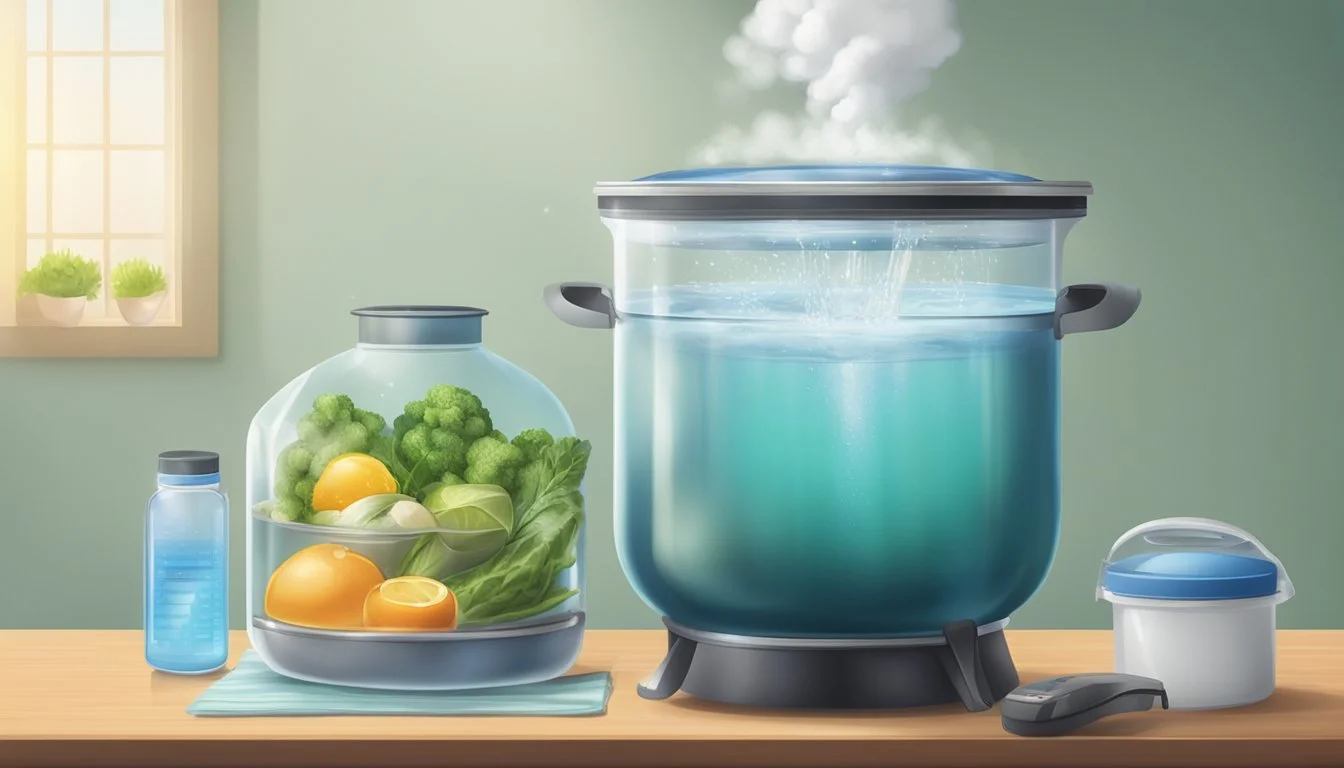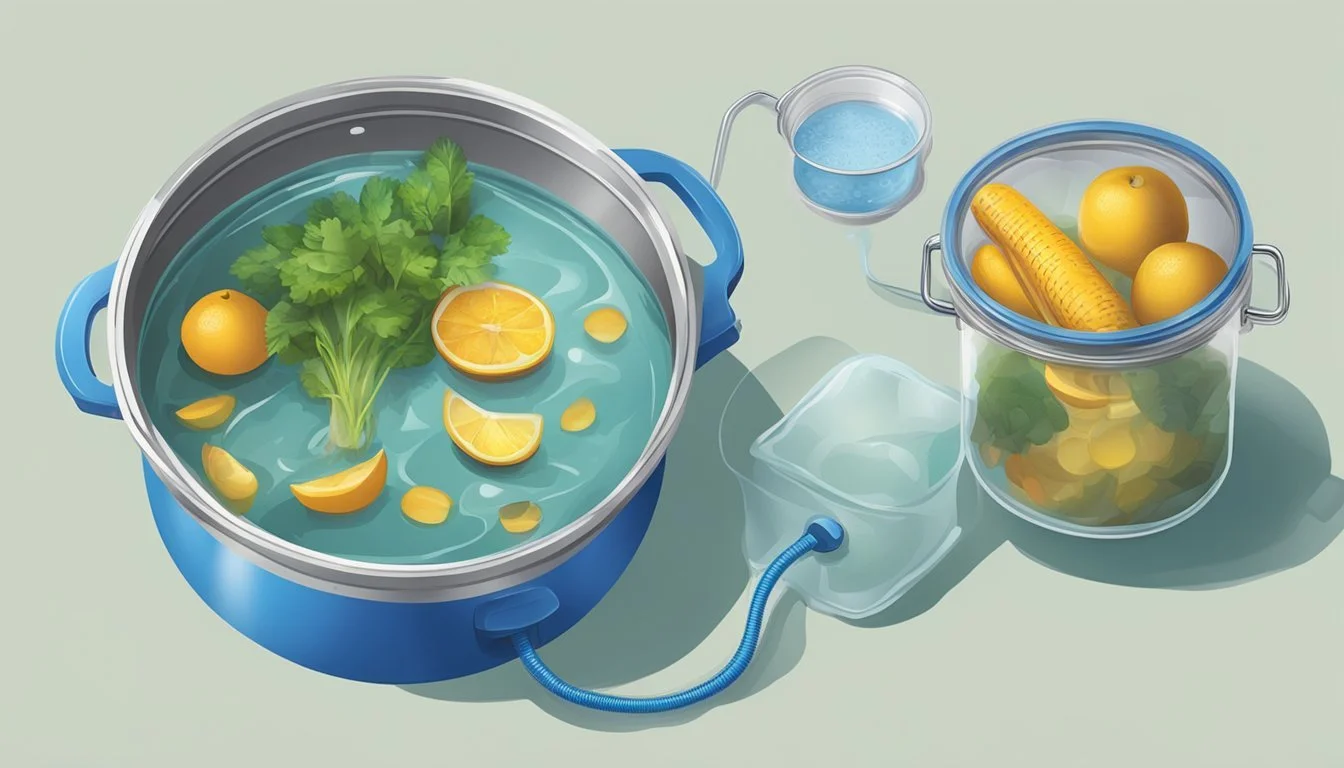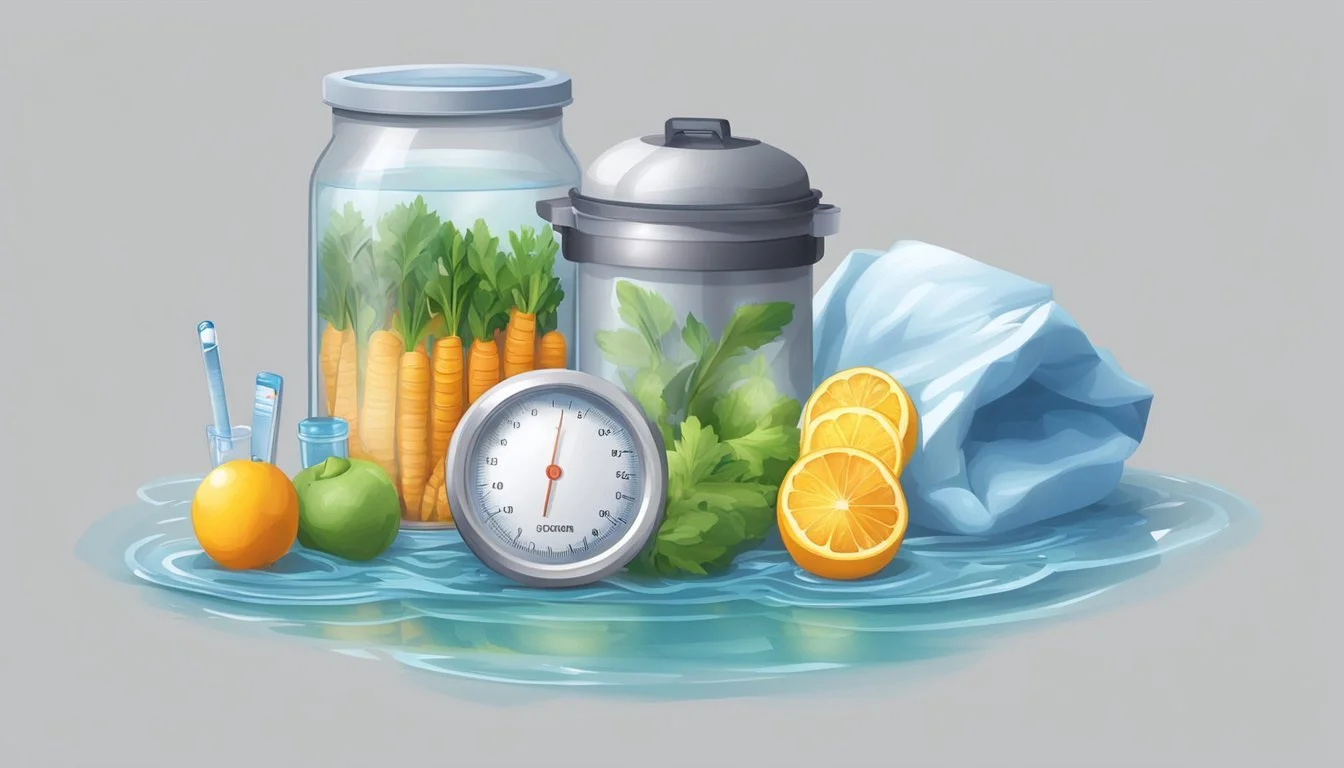DIY Sous-Vide Cooking
Mastering Precision with Simple Tools
Sous-vide is a cooking technique that involves heating food sealed in a bag to a precise temperature in a water bath. This method, traditionally utilized by professional chefs, has gained popularity for its ability to achieve consistently perfect results. It allows proteins to cook evenly, retaining moisture and enhancing flavor, while vegetables attain a perfectly tender consistency without losing their vibrant color.
While sous-vide machines are available for home use, they can be an investment for the casual cook. Fortunately, achieving sous-vide perfection does not require specialized equipment. With just a pot, some plastic freezer bags, and a reliable digital thermometer, culinary enthusiasts can replicate the sous-vide process in their own kitchens. The success of this DIY approach relies on maintaining a stable water temperature throughout the cooking process, which can be managed by carefully adjusting the stove’s burner.
DIY sous-vide empowers home cooks to explore gourmet-level cuisine in a more accessible way. By mastering the art of temperature control with everyday kitchen tools, they can unlock new textures and flavors in their favorite ingredients. Whether one is looking to cook a succulent steak or tenderly steam vegetables, the fusion of patience, precision, and the simple science of temperature can elevate home-cooked meals to new heights.
Understanding Sous Vide
Sous vide is a culinary technique that involves cooking food in a water bath at a precise, low temperature over a long period, which enhances tenderness and texture.
Sous Vide Fundamentals
Sous vide cooking requires a few key components: food sealed in a bag, a water bath, and precise temperature control. Food is typically vacuum-sealed, although a high-quality zipper-lock bag can suffice for those practicing DIY sous vide. Sealing food prevents water from entering and dilutes flavors. The water bath should be maintained at a consistent, low temperature, which is where a digital thermometer plays a crucial role.
Essential Element Purpose Sealed Bag Contains the food and prevents water contact Water Bath Medium for heat transfer to food Thermometer Ensures accurate and consistent water bath temperature
Benefits of Sous Vide Cooking
Sous vide cooking offers several advantages over traditional methods:
Precision: By cooking at specific temperatures, chefs have control over doneness without overcooking.
Tenderness: Long cook times at low temperatures result in tender textures that are often unachievable with conventional cooking.
Texture: Uniform temperature ensures the food cooks evenly, preserving moisture and improving the overall texture.
Additionally, sous vide cooking can be more forgiving than other methods since the risk of overcooking is minimized—food can often remain in the water bath beyond its minimum required cook time without detriment.
Getting Started with DIY Sous Vide
Embarking on the journey of DIY sous vide cooking requires precision and patience, but it’s a rewarding process that can lead to consistently exceptional dishes. One only needs some essential kitchen tools and a careful set-up to maintain the precise temperature required.
Essential Tools and Equipment
To begin sous vide cooking without specialized equipment, one needs the following:
Pot of Water: A large pot that can hold enough water to completely submerge the food.
Digital Thermometer: Critical for monitoring water temperature accurately.
Stove: It will be used to heat and maintain the water bath's temperature.
Binder Clips: Useful for securing the bag to the side of the pot.
Zipper-Lock Bags: Can be used in place of vacuum-sealed bags for enclosing the food.
Heavy-Duty Kitchen Tongs: To safely place and remove bags from hot water.
One should ensure that their digital thermometer is accurate to guarantee the water is kept at the precise temperature needed for sous vide cooking.
Setting Up Your DIY Sous Vide Station
Setting up the DIY sous vide station involves a few important steps:
Heating Water: Fill the pot with water and heat it on the stove to the desired temperature range for the food you're cooking.
Temperature Control: One must closely monitor and adjust the stove's settings to maintain a steady water temperature, as suggested by the digital thermometer.
Bagging the Food: Season the food as desired, place it in the zipper-lock bag, and use the water displacement method to force air out and seal it nearly completely.
Securing the Bag: Use binder clips to attach the bag to the side of the pot to ensure it stays submerged and in place.
Cooking Time: Follow recipe-specific cooking times for different foods, ensuring that the water bath maintains a constant temperature throughout the process.
Through careful monitoring and regulation of water temperature, one can achieve sous vide perfection with these basic tools.
Sous Vide Cooking Process
Sous vide cooking enables precise temperature control, ensuring that meat, fish, and vegetables are cooked evenly from edge to edge. The process requires the ingredients to be vacuum-sealed with seasonings before being submerged in a water bath at a consistent temperature.
Preparing Your Ingredients
Before starting the sous vide process, one must properly prepare their ingredients. For meat and fish, uniform thickness contributes to even cooking. Salt, herbs, and other aromatic ingredients enhance the flavor profile when sealed with the food. It's crucial to pat the ingredients dry and season them to taste before sealing.
Vacuum-Sealing Techniques
The essence of sous vide cooking is airtight vacuum-seal, which enables the food to cook thoroughly in a temperature-controlled environment. Here are the steps to achieve a proper vacuum-seal without a machine:
Fill a plastic freezer bag: Insert the seasoned ingredients.
Submerge: With the bag open, slowly submerge it into the water — the pressure will push the air out.
Seal the bag: Once the air is expelled and the bag's edge is just above the waterline, seal the bag completely.
Temperature and Time Mastery
Achieving the desired doneness depends on maintaining the correct temperature and timing.
Meat: Cook steak at 129°F to 135°F for medium-rare, typically for 1 to 4 hours.
Fish: A delicate option like salmon requires lower temperatures, around 120°F to 130°F, for 30 minutes to an hour.
Precise temperature control is key; use a digital thermometer to regularly check water temperature. Adjust heat and water level as necessary to maintain consistency throughout the cooking time.
Types of Foods to Sous Vide
Sous vide is a cooking method that allows for precision in temperature control, making it ideal for a variety of foods. From juicy meats to delicate fish and hearty vegetables, the spectrum of foods that benefit from this technique is wide-ranging.
Ideal Cuts of Meat for Sous Vide
When it comes to beef, sous vide transforms tough cuts into tender, flavorful dishes. Short ribs and chuck roasts can be cooked slowly, resulting in a melt-in-your-mouth texture. For pork chops, (What wine goes well with pork chops?) sous vide ensures a moist, perfectly cooked chop that retains its juiciness. Similarly, chicken breasts (What wine goes well with chicken breast?), which often dry out with traditional methods, remain succulent and tender.
List of ideal meats for sous vide:
Beef: Short ribs, Chuck roast
Pork: Pork chops
Chicken: Breasts, Thighs
How to Perfectly Sous Vide Fish
Salmon, known for its tendency to overcook, emerges evenly cooked and flakes effortlessly when prepared sous vide. To achieve perfection, one should seal the fillets with simple seasonings and cook at a temperature between 110°F to 140°F, with the exact temperature depending on the desired doneness.
Sous vide temperature guide for salmon:
Rare: 110°F
Medium-rare: 125°F
Medium: 140°F
Vegetables and Other Proteins
Vegetables like carrots and asparagus benefit from sous vide, allowing their natural flavor to intensify while maintaining a satisfying crunch. Proteins like eggs also excel with this method, enabling one to pinpoint the exact level of doneness from a barely set white to a creamy yolk.
Vegetable and egg sous vide suggestions:
Vegetables: Cook at 183°F to 185°F
Eggs: 145°F for a creamy yolk
Finishing Techniques
After sous-vide cooking, finishing techniques are essential for adding flavor and texture to the dish. Proper finishing can elevate the sous-vide experience by introducing a contrast in texture while also amplifying the dish’s flavor profile.
Creating the Perfect Sear
To achieve an ideal sear, one must heat a skillet to a high temperature before placing the meat in the pan. An effective method is to use a cast iron skillet, which retains heat well and contributes to an even sear. A small amount of olive oil can be added to the pan, although its smoke point should be taken into account; alternatively, high-smoke-point oils such as canola or grapeseed oil may be used.
Once the pan reaches the desired temperature, the meat should be dried thoroughly using paper towels, as moisture can impede browning. The protein is then placed in the skillet and seared for approximately one to two minutes on each side until a brown crust forms. This Maillard reaction is crucial for developing rich flavors and an appealing crust.
Using Aromatics and Oils
Incorporating aromatics such as minced garlic, shallots, or fresh herbs into the finishing phase can significantly enhance the flavor of the sous-vide dish. They are usually added to the skillet during the last 30 seconds of searing. When the aromatics become fragrant, a dollop of butter can be introduced to the pan. The use of butter not only adds richness and flavor but also helps to baste the cooked product, ensuring an even distribution of heat and the infusion of aromatics.
Once the butter melts, one can continuously spoon the hot butter over the meat. This not only cooks the edges but also allows the flavor from the herbs and garlic to meld with the juices of the protein, effectively layering flavors. Aromatic finishing is most effective when done quickly to avoid overcooking the meat or burning the aromatics.
Recipes and Tips for Success
In this section, readers will learn how to transform simple ingredients into extraordinary dishes using precise temperatures and times. Key elements include carefully-selected recipes and troubleshooting strategies that ensure consistent, flavorful results every time.
Signature Sous Vide Recipes
Steak:
Medium-Rare Steak: For a steak that's perfectly pink from edge to edge, sous vide at 129°F (54°C) for 1 to 2 hours. Season with salt and pepper before sealing in a plastic freezer bag.
Roast:
Garlic-Herb Pork Roast: Marinate a pork roast in a blend of garlic, rosemary, and thyme. Cook sous vide at 145°F (63°C) for 4 hours to achieve a moist, tender texture.
Seafood:
Lemon-Dill Salmon: Place salmon fillets with lemon slices and dill in a bag. Sous vide at 122°F (50°C) for 30 to 45 minutes for an entrée that’s bursting with flavor.
Vegetarian:
Miso-Glazed Carrots: Glaze carrots with a mix of miso paste, honey, and butter. Sous vide at 183°F (84°C) for 1 hour for carrots that are infused with flavor and have a perfect bite.
Troubleshooting Common Issues
Temperature Fluctuations:
To maintain a consistent water bath temperature, frequently check with a reliable digital thermometer. If the water cools down, adjust the stove's heat settings accordingly.
Bag Leakage:
Before cooking, ensure the food is properly sealed in a sturdy plastic freezer bag. Use the water displacement method to remove air and prevent the bag from floating or leaking.
Seasoning Before Sealing:
For the most flavorful experience, season food generously with salt, pepper, or other spices before sealing it in the bag.
Final Searing:
To add a delectable crust to meats such as steaks and roasts, quickly sear them in a hot pan after sous vide cooking and before serving.
Beyond Basics
Mastering sous vide at home involves understanding not only the basic principles of low and slow cooking but also advanced techniques and DIY equipment improvements. This knowledge ensures precise temperature control and optimal cooking results.
Advanced Sous Vide Techniques
Temperature Precision: A key aspect of advanced sous vide cooking is managing the water bath's temperature with pinpoint accuracy. An immersion circulator is the ideal tool for this, as it circulates and heats water to a precise temperature. For those seeking a DIY solution, a thermocouple linked to a PID (Proportional-Integral-Derivative) controller, like those from Auber Instruments, can maintain water temperatures within a tight range.
Vacuum Sealing: While FoodSaver vacuum sealers are popular for removing air from sous vide bags, advanced users sometimes opt for chamber vacuum sealers, which provide a stronger seal. This can be especially important when cooking at higher temperatures or for extended periods.
DIY Equipment Enhancements
Improvised Containers: Beyond the usual pots, many at-home chefs innovate with insulated coolers or precisely engineered vessels like the Sous Vide Supreme to maintain consistent temperatures.
Rigging Slow Cookers: A resourceful cook can transform a slow cooker into a sous vide machine. By wiring a PID controller into a slow cooker, the user can adjust the cooking environment to rival commercial-grade equipment.
Educational Resources: For those looking to deepen their sous vide expertise, resources like Douglas Baldwin's writings and ChefSteps classes offer in-depth guidance on the science and creativity of sous vide, enabling cooks to push beyond the basics of this cooking method.
Safety and Maintenance
In sous vide cooking, food safety is paramount, and properly maintaining equipment ensures consistent results and longevity. These practices minimize bacterial growth and maintain the integrity of cooking equipment.
Preventing Bacterial Growth
Sous vide operates at precise temperatures, often in the range that bacteria can thrive if not carefully managed. The key is to maintain water temperatures above 55°C (131°F) which is generally sufficient to prevent dangerous bacterial growth for most foods. However, some recipes require cooking fish or other delicate proteins at lower temperatures; in such cases, it's crucial to limit the cooking time to reduce bacterial risks.
Key points:
Temperature: Always ensure water bath maintains the correct temperature.
Duration: Limit cooking times, especially for temperatures below 55°C.
Airtight Seal: Use either vacuum sealing or a displacement method to ensure an airtight environment, inhibiting bacterial growth.
Caring for Your Sous Vide Equipment
Maintenance of sous vide equipment involves:
Regular Cleaning: After each use, thoroughly clean all components that come into contact with water or food. Dry thoroughly before storing.
Storage: Store equipment in a dry place to prevent mold and mildew.
Inspection: Before use, inspect bags for leaks, and ensure the sealing mechanism of your equipment is functioning properly to maintain an airtight environment.
Maintain the pot used for cooking by wiping it down after use and checking for wear and tear that could interfere with temperature maintenance. Keep thermometers calibrated to ensure accuracy, which is essential for both food safety and culinary results. Remember that constant care extends the life of your equipment and safeguards the quality of your sous vide dishes.
Exploring Sous Vide Resources
To master the technique of sous vide, resources such as comprehensive guides and supportive online communities are invaluable. They offer detailed insights into cooking times, temperature control, and meal prep.
Books and Guides
A wealth of information is available in books and guides dedicated to sous vide cooking. These resources commonly include Time and Temperature Guides to ensure precise cooking, advice on preventing oxidation of foods, and guidance on meal prep for efficient sous vide cooking. Recommended titles often encompass:
Sous Vide for Everybody: The Easy, Foolproof Cooking Technique That's Sweeping the World by America's Test Kitchen, providing step-by-step instructions and troubleshooting tips.
Under Pressure: Cooking Sous Vide by Thomas Keller, which delves into more advanced techniques and culinary applications of sous vide.
Online Communities and Support
The growth of sous vide among home chefs has led to the proliferation of online communities and support networks. These forums and websites are hubs where individuals share experiences, troubleshoot issues, and discuss the electrical components needed for DIY setups. Notable platforms include:
Reddit’s r/sousvide community, where members exchange tips and recipes.
The Sous Vide at Home Facebook group, providing a space for beginners and experts alike to support each other.
Moreover, comprehensive online guides offer technical advice on maintaining the right water temperature without an electric sous vide machine, opting for manual methods like monitoring with a digital thermometer.








